Wireless headphones offer the best mix of portability, comfort, and audio quality available. The best wireless headphones help block outside noise while providing you with the sharpest and most beautiful audio you can get outside a studio.
We checked out some of the hottest and most in-demand headphones available and ended up with a list ten that knocked our socks off.
Rankings
1. Sony WH1000XM3 Noise Cancelling Headphones

Ever since the release of their first-generation wireless headphones, Sony has consistently pushed the envelope of what high-end portable audio looks and sounds like. The WH1000XM3 is no exception, offering industry-leading audio quality paired with ever-improving noise cancellation algorithms and comfort that you have to feel to believe.
Why we like it: The WH1000XM3’s are noticeably better than their closest rivals in almost every way. To start with, they’re incredibly clear and punchy, with the most advanced BlueTooth codecs plus Sony’s proprietary LDAC system to provide the highest fidelity wireless transmission we’ve ever encountered. They’re insanely comfortable, fold down smaller than you’d believe for portability, and look incredibly sharp.
Flaws: The noise cancellation of the WH1000XM3’s is excellent, but not quite top of the line. The overall clarity and quality of the drivers and sound produced more than make up for it, but if you want the absolute best noise cancellation, you may want to consider a different pair.
2. Bose 700 Noise Cancelling Wireless Headphones

For the 700 series headphones, Bose took a huge step away from the aesthetic and ergonomic designs of their previous headphone generations. Instead of industrial chic with visible hinges and plush, pleated earcups, you wind up with a sleek, narrow headband designed to cut down weight and improve the overall appearance. Even better are the improvements they’ve made under the hood.
Why we like it: It’s hard to beat Bose’s industry-leading expertise in active noise cancellation. Every generation of their headphones refines and improves on what was already pretty incredible, to the point where they’re the only brand you should consider if noise cancellation is your primary focus. When you combine their incredible active noise cancellation with the advanced array of mics and a specialized digital signal processing (DSP) system you wind up with headphones perfectly suited for the business traveler on the go who’ll be fielding phone calls just as often as jamming out.
Flaws: The most underwhelming part of the 700’s is their battery life. Where most flagship headphones provide 30 or more hours of jam time, you’ll be lucky to get 20 hours of use out of the 700’s with cancellation turned on.
3. Philips PH805 Wireless Headphones

The Philips PH805s are mid-range wireless headphones with features that look a lot more like those you would expect to find on much pricier competitors. They aren’t perfect, but they look extremely sharp with smooth lines, low profile headband padding, and earcups that offer all-day comfort.
Why we like it: The PH805 provides a great blend of price point, quality workmanship, and advanced features. Their 40mm drivers provide a clear, punchy sound that lets you distinguish every little detail without draining the battery rapidly. Even with noise cancellation on you get a full 25 hours of use between charges and up to 30 with it off. What’s even wilder is their price; they’re consistently $50 to $100 cheaper than comparable headphones.
Flaws: While the noise cancellation is adequate, it’s nothing to write home about. If any compromises were made in the PH805s, it was in the algorithms and sensors used for the active noise cancellation system.
4. Bowers & Wilkins PX7 Wireless Headphones
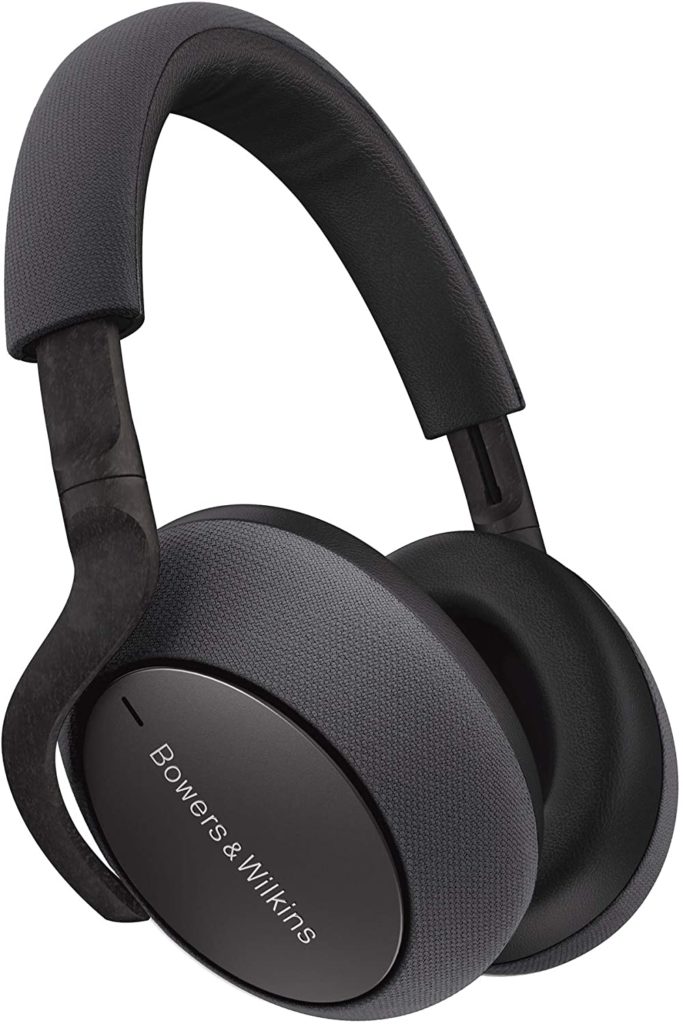
The Bowers & Wilkins PX7s is the latest flagship headphones from the storied British audio manufacturer. They improve upon everything they got right with the first issue PX headphones and add a few additional high-end touches that help make the PX7’s really wow anyone who wears them.
Why we like it: With impressive 43mm drivers, native support for the advanced aptX HD BlueTooth codec, and high-end aesthetic and comfort touches like ultra-lightweight carbon fiber components, the PX7 arguably edges out the competition for the title of best in class wireless headphone. It’s an ultra-premium pair of wireless headphones for those not put off by a high price.
Flaws: As we mentioned, the price. The PX7’s are priced noticeably higher than its closest competitors. It’s undeniably better in certain aspects, but we don’t know if it justifies the very high price tag.
5. Bose QuietComfort 35 Series II

While no longer Bose’s flagship over-ear headphone, the QuietComfort 35 Series II is still an extremely capable wireless headphone with excellent marks in all categories. It was the undisputed champion of the last generation of wireless over-ear headphones and still offers near top of the line features at a reduced price.
Why we like it: Other than its audio quality, which is stellar, the QuietComfort 35 Series II stands out for its incredibly portable design. It folds into a flatpack storage case that allows you to slip it comfortably into any leftover nook and cranny of your bag, perfect for frequent fliers and others concerned with travel weight and space.
Flaws: As good as it is, the QuietComfort 35 is no longer the best you can get. You can spend 20-30% more and get headphones with noticeably better sound quality and noise cancellation features.
6. Jabra Elite 85H Wireless Headphones
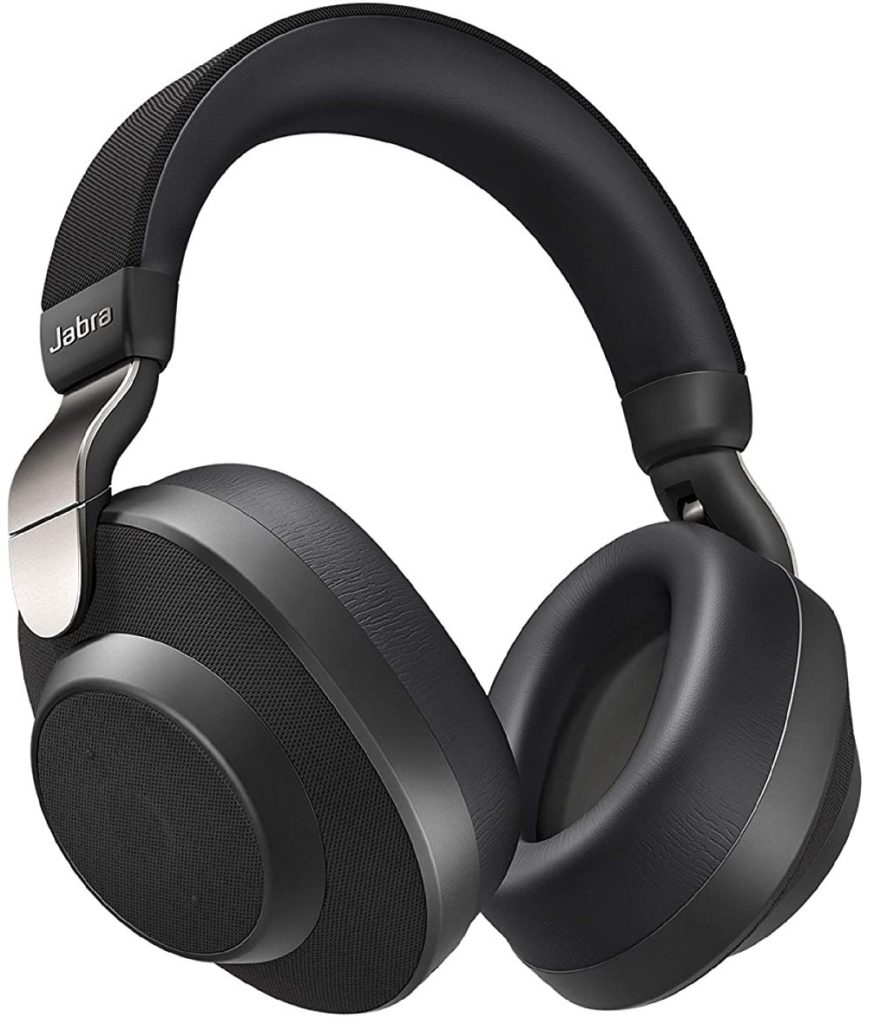
The Jabra Elite 85Hs combine Nordic design aesthetics with high-end build quality. They’re sleek, they’re stylish, and they still offer performance that stands shoulder to shoulder with the best headphones available on the market. Not bad at all, considering these are the first high-end wireless headphones Jabra has ever attempted.
Why we like it: The most standout features of the 85Hs are its exemplary battery life and high degree of customizability. With ANC on, it gives you 36 hours of continuous use, and you can bump that up to 41 with it turned off. Jabra’s Sound+ app allows you to tweak every aspect of the sound, controls, and functionality of the 85H to make them into your own personal headphones.
Flaws: Where the 85Hs fall flat is in codecs. They don’t currently support AAC, aptX, or LDAC for providing near-lossless audio quality. Your average user probably won’t be able to tell the difference, but a hardcore audiophile definitely will.
7. Sennheiser Momentum 3
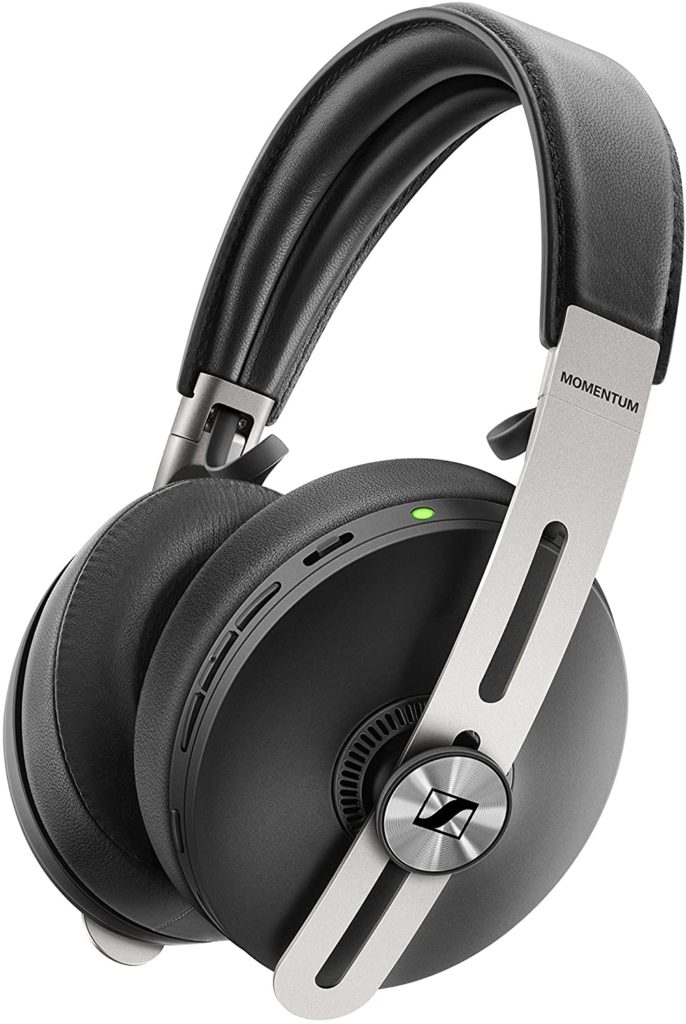
The Sennheiser Momentum 3 showcases the company’s long experience in producing high-end audio systems. It has 42mm drivers that provide some of the clearest and most stunning audio you’ll find on wireless headphones. It also doesn’t hurt that they’re some of the most gorgeous over-ear headphones you can find.
Why we like it: Where the Momentum 3’s stand out is in audio quality and smart features. The clarity and sound stage effect of the Momentum 3 is second to none. It comes standard with a Tile compatible tracker for those of us who frequently misplace things and offers a suite of customization options that include the level and type of active noise cancellation.
Flaws: Other than their price, which is high, what truly disappointed us about the Momentum 3’s was their lackluster battery life. You get 17 hours at best with the noise cancellation on, and during our testing, we found it to be closer to 15 under real-world conditions. Even worse for something this high-end, the noise cancellation was passable at best. It’s certainly not bad, but many other headphones in similar and even cheaper price points surpass it.
8. Marshall Major III
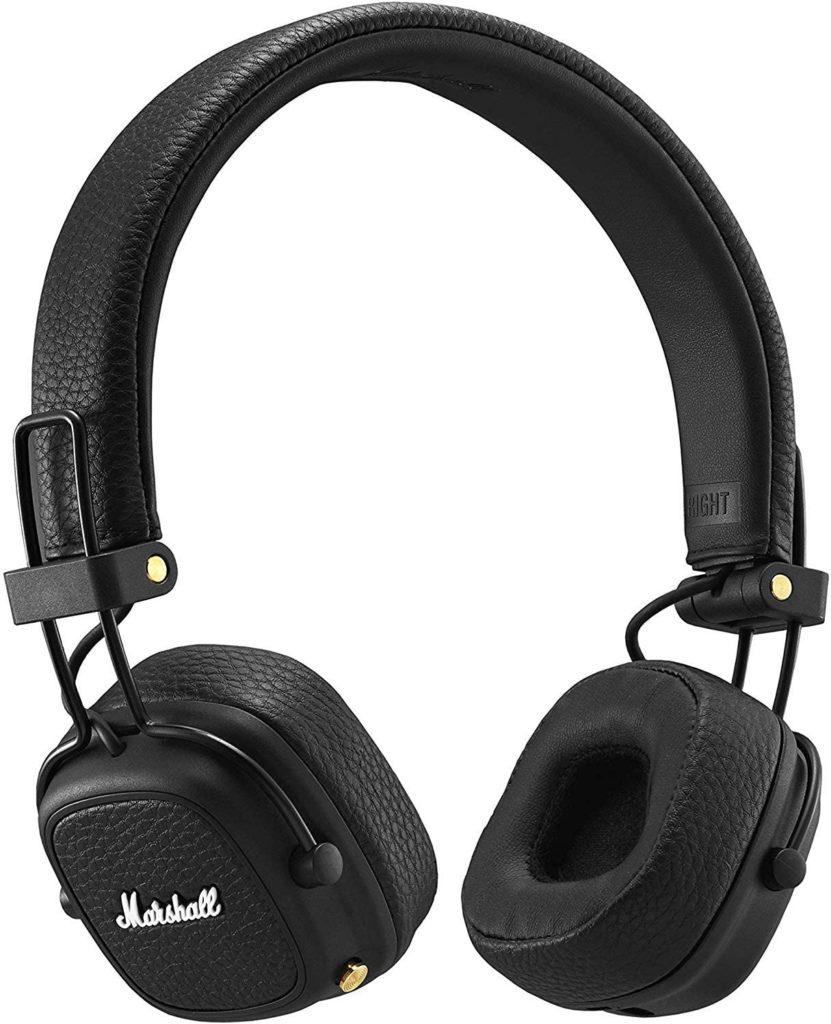
Marshall is a name any rock enthusiast will instantly recognize. They’ve been making some of the best American amps and other rock gear for decades and have recently tried their hand at producing rock-specific wireless headphones. The Major III’s ooze a rock’n’roll aesthetic, with a gorgeous black leather headband and earcups plus an industrial wire sliding adjuster.
Why we like it: The Major III’s have clear, punchy mids and uppers that let you rock out to guitar-heavy tracks. They use the latest BlueTooth aptX codec for the best sound quality possible, offer a 30+ hour battery life, and are stylish, lightweight, and fold-down shockingly small even for on-ear headphones.
Flaws: If you’re listening to any kind of music other than rock and specifically classic rock, these aren’t the headphones for you. They’re gorgeous, and they sound great, but the audio is hyper-focused on providing the kind of smooth mids and crystal clear uppers that rock enthusiasts demand.
9. Anker Soundcore Life Q20 Hybrid

The Anker Soundcore Life Q20 Hybrids are one of the best bargains you’ll find for wireless headphones. They’re from a reputable brand known for making high-quality generic electronics and offer features that are hard to find outside headphones many times their price point. The audio quality, noise cancellation, and even fit aren’t perfect, but they’re a lot better than the comparably priced competition and good enough for most people’s daily use.
Why we like it: For the money, it’s impossible to find wireless headphones with the same level of overall quality. The Q20’s cost barely 15% as much as our top-ranked headphones, yet provide a whole lot more than 15% the value. If a pair of $300+ headphones isn’t in the cards for you, the Q20’s give you reasonable sound quality, effective noise cancellation, all-day comfort, and a shockingly long 40-hour battery life.
Flaws: At their core, these are value-priced headphones. You can find headphones that are better than the Q20’s in basically every way if you’re willing to spend more.
10. AKG N60NC Wireless Headphones
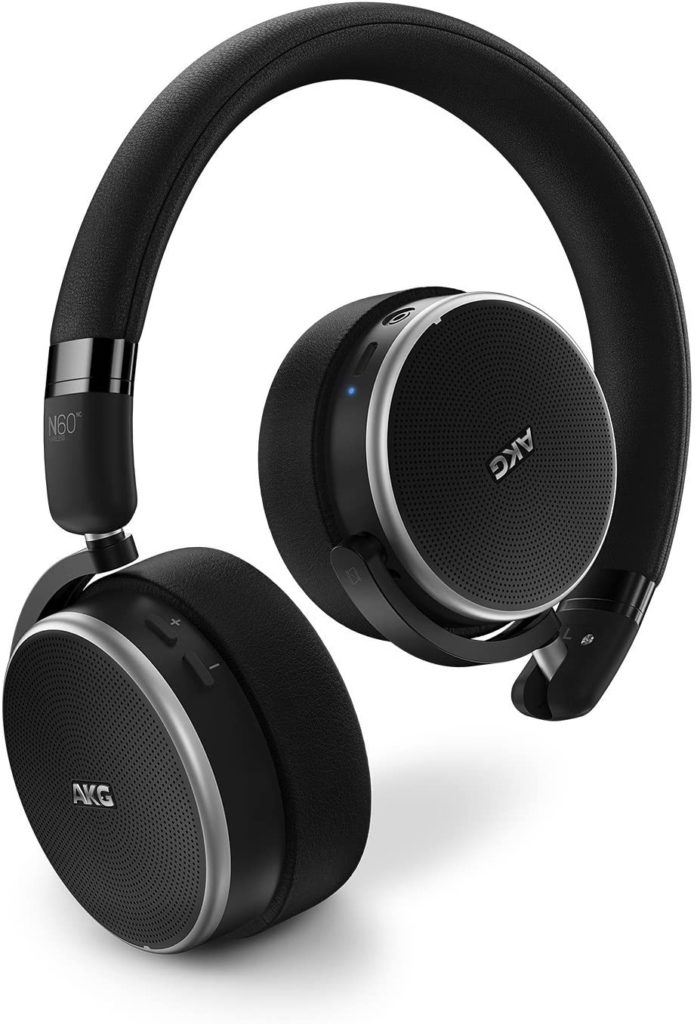
The AKG N60NC Wireless Headphones are on-ear BlueTooth headphones with active noise cancellation built-in. They’re incredibly compact and well designed for frequent travelers on short flights or daily commuters. The sound quality and noise cancellation stand up well to most competitors, but the long term comfort does leave something to be desired.
Why we like it: The N60NCs have a well-balanced sound mix that works well with most forms of music. The active noise cancellation is effective and produces next to no noticeable interference or ‘hiss’, and its price point is eminently attainable for most headphone customers.
Flaws: We’ll be honest; we think the on-ear form factor has some inherent flaws that are hard to overlook. These are great headphones, with great specs, but we consistently found them uncomfortable after just an hour or so.
Who should buy wireless headphones?
Commuters – Anyone who frequently commutes on a train, subway, or bus knows the value of quality audio gear. Being able to block out the sounds of other passengers and the vehicle itself can be an absolute godsend, and there are few better ways than with wireless headphones.
Modern wireless headphones offer active noise cancellation and passive sound isolation to help reduce the noise of the world from interfering with your morning jam session. They also make it easy to catch up on podcasts or even take a conference call without disturbing other passengers.
Frequent Flyers/Travelers – Business travelers often spend more time in airports and on planes than they do in the office. Wireless headphones, especially wireless headphones with active noise cancellation features, give you a way to block out the noise of an engine (or a crying baby) and relax even while on the go (1).
Audiophiles on the go – Earbuds are great for travel, but for the true audiophiles among us they just won’t cut it for audio quality and track fidelity. If you only listen to lossless formats but don’t want to pack your studio headphones and portable amp, wireless headphones are thte next best choice.
The highest-end wireless headphones use advanced BlueTooth codecs approaching the quality of wired studio quality (2).
How we ranked
We used six key metrics when putting together our list. These were audio quality, battery life, active noise cancellation vs. sound isolation, comfort, portability, and price vs. value.
Audio quality- By far the most crucial factor was how good the headphones sounded. For this one, we focused on the clarity of the audio as well as the baseline balance. A lot of modern headphones are bass-heavy, with muddier mids and uppers. Your music will still sound good, but probably not as good as the artist intended.
We also considered how the headphones connected. Ideally, you want BlueTooth 5.0 in your headphones and your device, with codecs such as aptX or AAC for Apple devices. These produce a much less lossy sound (3)(4).
Battery life – Modern wireless headphones should provide a minimum of 15 to 20 hours of battery life. Top-quality models offer as much as 30+ hours of use between charges, even when Active Noise Cancellation is on.
Active Noise Cancellation (ANC) vs sound isolation – One of the most significant benefits of over-ear headphones is their ability to block outside noise from interfering with your listening experience. Most commonly they use either Active Noise Cancellation, sound isolation, or a combination of the two.
Active Noise Cancellation is, well, active. It can cancel out the sound of constant background noise, but there are some tradeoffs. The biggest is reduced battery life. While the ANC is on, your battery will drain noticeably faster. For the true audiophiles, ANC also muddies the clarity and quality of sound, though your average user won’t be able to notice.
Sound isolation is how headphones have worked for decades. It relies on the physical buffering of the earpads to block outside sound. It doesn’t work as well at preventing things like plane engines, but also doesn’t drain your battery or change the quality of the music (5).
Comfort – Even the highest quality wireless headphones won’t provide much value if you can’t wear them for more than an hour or so. The biggest comfort question is whether you want on-ear or over-ear headphones.
On-ear headphones are generally cheaper, lighter, and more portable, but rest on top of your ears rather than nesting over them. Over-ear headphones are considered the best quality headphones and provide excellent comfort at the cost of more considerable bulk.
Portability – One of the most significant benefits of wireless headphones is their ability to be used on the go. You can connect them to your phone or computer wherever you are without having to deal with a dangling cord. Some headphones, however, don’t take this into account and completely ignore the portability issue in favor of aesthetics or specific features designed to improve overall sound quality.
We gave extra marks for wireless headphones that took mobile consumers into account with the design of their packaging and how the headphones themselves were structured.
Price vs. value – Wireless headphones come in a vast range of price points, with some genuinely incredible top of the line models available.
Don’t be discouraged if your budget is less Maserati and more Toyota; there are some high-quality value-priced models out there as well. We put both on our list, with the top-of-the-line models alongside very well-made bargains.
We weighted each of these metrics in order of importance and used them to create our final list. All of the headphones we mentioned above offer significant value and quality.
FAQ
Q: Does noise cancellation lower sound quality?
A: Yes, though not as much as you’d think. Active noise cancellation combines a system of microphones with advanced algorithms that measure outside noise and project opposite white noise to mask the noise. It works beautifully on constant sounds like engines or the roar of a crowd but not so great on a conversation or irregular noises (6).
The downside to this is that whatever you’re listening to is subtly changed. For the vast majority of users, it’s hardly noticeable. Still, if you’re the kind of audiophile who puts in the effort to listen to lossless tracks, you’ll hear a difference.
Q: How do wireless headphones work?
A: Wireless headphones use modern digital communication technology, usually BlueTooth or occasionally infrared, to connect to your devices remotely. It allows them to play your music with limited loss of audio quality and without the inconvenience of a dangling cord connecting to your phone, stereo, or amp.
Q: Are wireless headphones waterproof?
A: Generally, no. Some models offer water-resistance, but it’s not to the point where we’d be comfortable wearing them out in the rain. If you find yourself in a sudden storm, you should put your headphones away or walk under an umbrella.
Q: Are wireless headphones as good as wired?
A: No. While wireless headphones offer a lot of great benefits over wired headphones in convenience, portability, and comfort, they can’t quite match the basic audio quality of wired headphones. Wired headphones rely on analog audio signals that transmit more data faster than even the best wireless signals. Wireless is getting a lot closer, but for now wired still has the audio edge (7).
Q: Are wireless headphones good for working out?
A: Yes and no. Wireless headphones provide beautiful sound quality and a comfortable fit, but they aren’t as sweat resistant as sport-specific earbuds and are quite bulky. You definitely can wear them if you like but you should expect to have to deal with sweaty earcups and a potentially slipping/sliding fit.
Q: Do wireless headphones have a good battery life?
A: Yes! Modern wireless headphone manufacturers have been improving battery life pretty much across the board. You can now reliably expect to get 20+ hours of battery life from any high-quality wireless headphones even with active noise cancellation turned on.
Our top pick for wireless headphone battery life is the Jabra Elite 85H.
Q: Are wireless headphones allowed on a plane?
A: Yes. Currently, the vast majority of airlines around the world allow the use of small BlueTooth devices like headphones. Because they contain lithium batteries you won’t be able to put them in your carry-on, but we doubt if that will be a problem under most circumstances (8).
Recap
With more choices than ever in the portable audio market, wireless headphones have reaffirmed their place at the top of the food chain. They offer unbeatable comfort, convenience, and portability with sound quality that’s hard to find outside a studio setting.
For Hastings #1 wireless headphones recommendation, click here.




